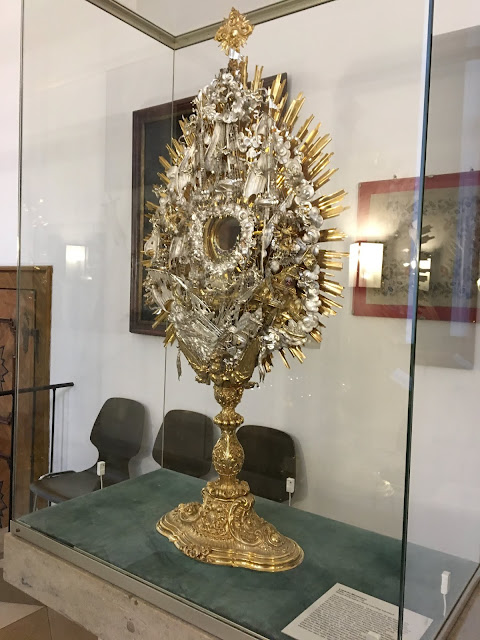I had seen so many pictures of the remarkable flat ceiling at Ingolstadt yet never been near enough to visit. Indeed I had not taken in that it was a church. Ingolstadt is a large historic city with cathedral, pedestrian centre with magnificent old houses. Yet this church is the highlight. It was built 1732-6 as a prayer and meeting room for the Jesuit congregation of the city. The designer may have been EQ Asam, and if so it can be questioned whether the interior is high enough for its length. Certainly it is not a typical Asam church. It is just a plain rectangle without aisles, with flanking volutes on the upper story of the facade. The external decoration of the facade has elaborate white scroll oprnamentation on a pink ground, as can be seen in photos below. Elegant but giving no hint of the glory inside.
Photo by Allie Caulfield on Creative Commons
Photo by Allie Caulfield on Creative Commons
The stalls, doors and organ gallery. are covered with rich carving
The high altar (above) has a baldachin with imitation brocade and four fine figures by JM Fischer representing the four Faculties of the University - Cosmas (Medicine), Thomas Aquinas (Theology), Ivo (Law) and Catherine of Alexandria (Philosopy).
The great ceiling fresco combines a central perspective with several additional perspectives and this causes different impressions of depth depending on your viewing point. There is a circle on the floor
to indicate the central viewing point. The inspiration to create such a composition, so large and complex, is amazing.
As you enter the light and the vibrant colours of the ceiling make it seem like a vision. Rays of Divine Grace shown as beams of light,criss-cross the composition to represent how Divine Grace has led to the Incarnation.
I have thought long and hard how to write about this ceiling. There is an admirable full description in my guidebook but so much text. I find it hard to read and I am sure so would you. What we need is a diagrammatic representation or drawing so that the elements of this amazing composition can be overlaid. I have searched the web in vain for this and until I find one cannot attempt to describe it.
 |
| By Mattana on Creative Commons CC BY-SA 3.0, |
 |
| Vestry contains the famous Lepanto monstrance by Johann Zeckl of Augsburg 1708 |











No comments:
Post a Comment